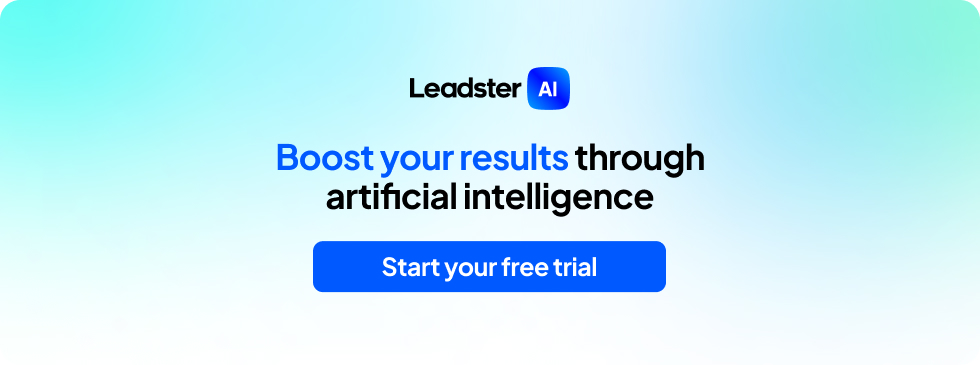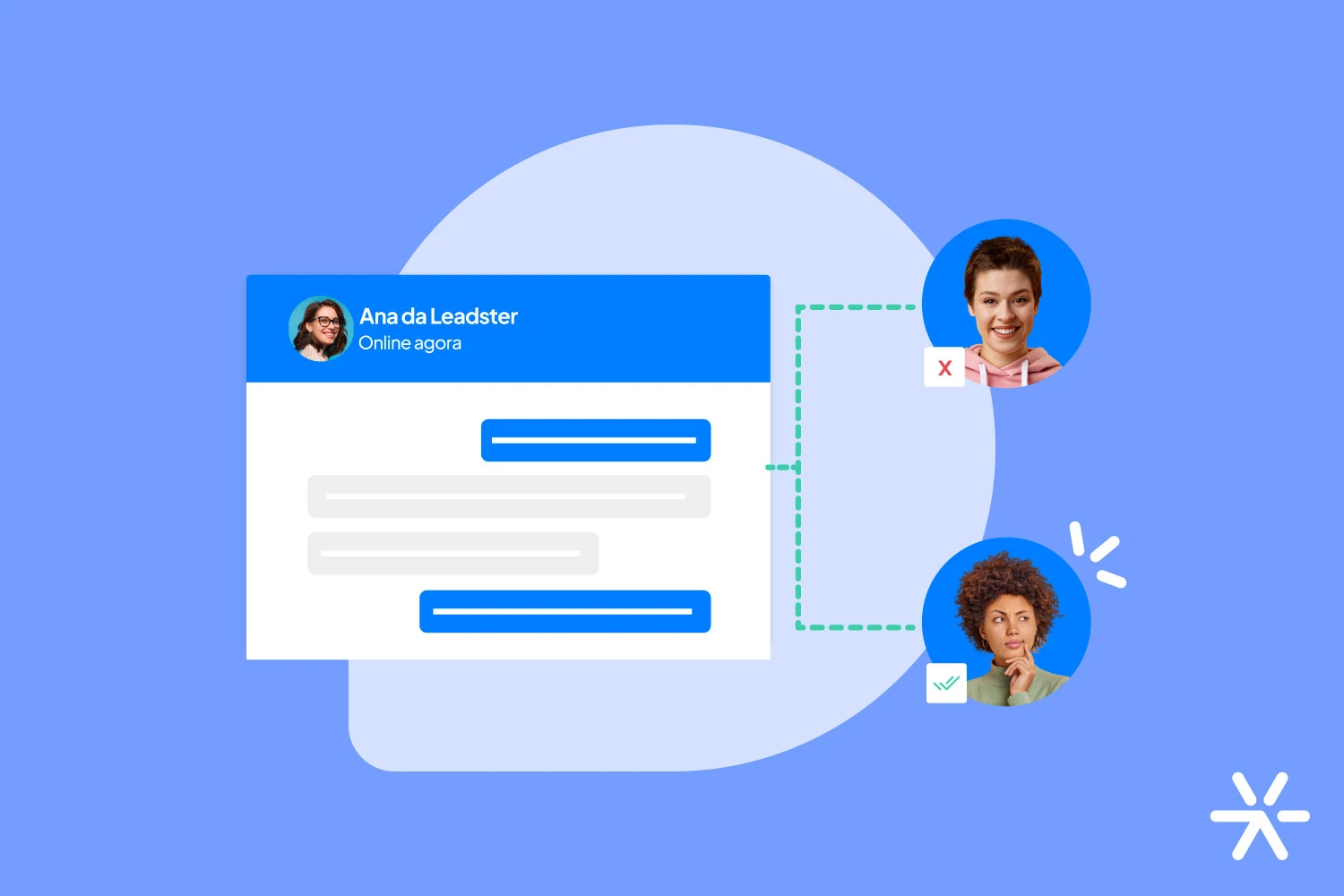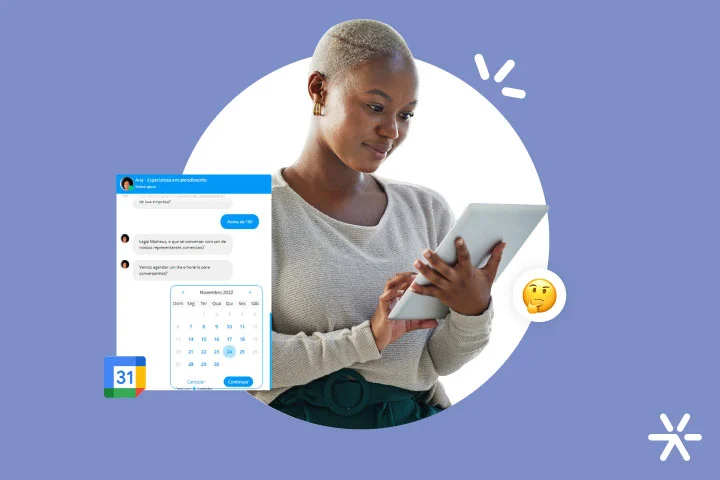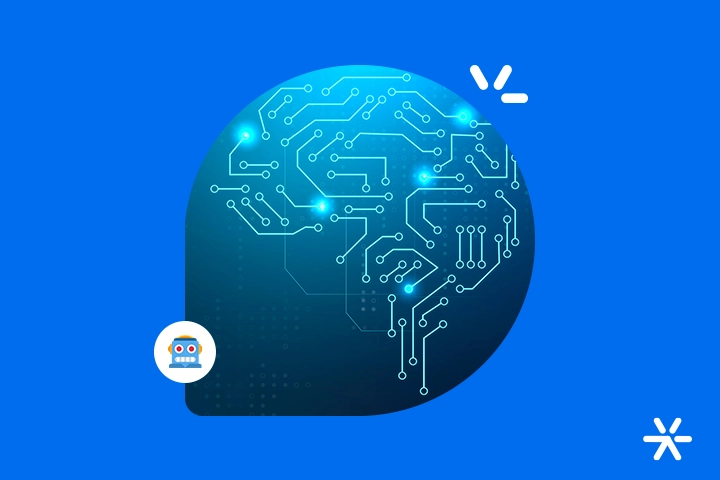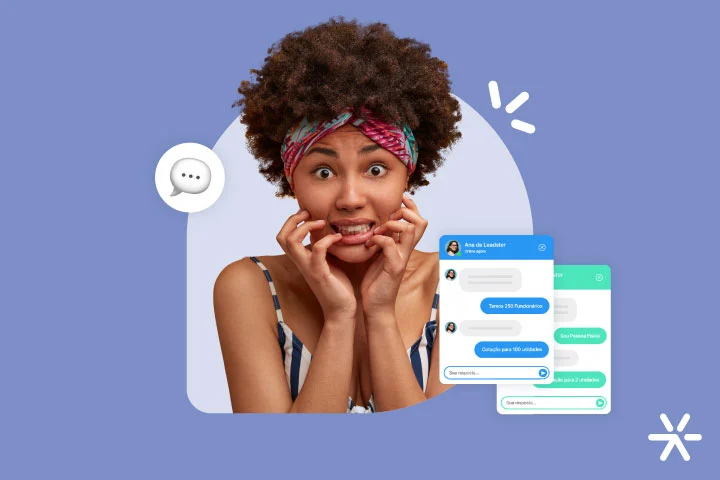Chatbot Flows and Scrips: How To and 6 Examples
The number of leads you generate on your website is directly related to the chatbot flows you create. Didn’t anyone tell you that? 😯
But of course: as long as you use a chatbot on your site.
Today’s article serves precisely to show you how this happens: let’s talk about what chatbot flows are, what you need to consider when creating one, and, if you’re not already using the tool, why you should be.
Today’s topic is this: how to configure a chatbot flow, what its main characteristics are, and of course: how exactly a chatbot can act in lead generation.
And let me start the article with a very common question: what are chatbot flows and what types exist?
Let’s go together as we have a lot to discuss today. Starting now.
What is a chatbot flow?
A chatbot flow is a form of marketing automation. For your chatbot to work, you need to create this flow and configure it according to your objective.
In other words, the chatbot flow is basically what your user will see when interacting with the tool.
As you respond and interact with the chatbot, it guides you through the next steps. If you decide to continue, it will capture some basic information and then guide the user to your CTA, whatever it is.
You design this. And the name of this design is chatbot flow.
But this is one type of chatbot flow, focused on generating leads. Below, we’ll discuss a little more about its characteristics and also understand the other type that exists, for customer service.
Come with me:
What are the types of chatbot flows?
Well, the chatbot we just showed you is a lead generation chatbot. This means its main function on the website is to increase your conversion rate.
But there’s also another type of chatbot: the one focused on customer service and support on your website.
Understanding this difference is crucial for you to align what the tool delivers with your expectations and needs.
Lead Generation Chatbot
The lead generation chatbot is your partner in increasing conversion on your site.
That’s because it offers, in addition to personalized approaches, several other functions that help you generate more contacts every day.
The idea of the lead generation chatbot is simple. It stays on your site’s homepage or any other specific page. And through it, you can offer any type of deal to your visitor.
It could be a free trial, as was the case in the example above. It could also be the offer of a rich material or direct contact with your sales team.
These chatbots are also replacing forms on Landing Pages, which work on a very dated model of lead qualification.
The lead generation chatbot is part of a conversational marketing strategy. Through it, you can achieve increased conversion and several other advantages. See, for example, the features of the Leadster chatbot:
- Direct meeting scheduling;
- Lead qualification;
- Lead sent to sales team;
- Segmentation and nurturing;
- Creation of customized flows for each page;
- Creation of AI-powered chatbot copy;
Personalized message according to the source channel (Google Ads, Social Ads, organic, etc.)
Among several others. Take a free trial to learn more 😉
Support and Service Chatbot
This type of chatbot has been around for quite some time, popularized mainly by Zendesk, LiveChat, and other similar platforms.
Basically, its job is to guide your website users, leads, and customers in everyday doubts and specific needs.
This type of chatbot flow is highly personalized. Creating one is practically like creating a service script, but one that happens without human interference.
The service chatbot greatly assists in company routines, but it does not generate leads. Its main function is to provide initial assistance, see if it’s necessary to involve an agent, and guide the customer through the process.
In fact, it is essential in your post-sales routines. Many people even prefer to talk to a chatbot when they have doubts rather than going straight to human support.
Because of the complexity and high level of personalization that these chatbots have, I’ll focus on how to create chatbot flows to generate leads in this article, okay?
So let’s talk a little more about that now:
What are the main points to consider when creating flows to generate leads with chatbots?
So, we’ve already understood what types of chatbots exist and what their main characteristics are, right?
Lead Generation Chatbots are mostly composed of super simple flows to create. What you need to keep an eye on is the purpose of each one.
For example: a flow for testing your tool, if you work in the SaaS software sector, will be quite different from a flow for a rich material.
Most of the points related to building a chatbot flow to generate leads are not related to the flow itself, but with the strategy and positioning of your chatbot, which should be thought out beforehand.
Let’s elaborate a little more on that now. Here are the main points you should consider when setting up your chatbot flows. Starting now:
Personalized Approaches
Each of your approaches needs customization to convert more.
It’s what we were discussing earlier. For a rich material, you’ll need to create one flow. For a test, another. For blog articles, another.
These personalized approaches make all the difference for those interacting with the chatbot. And it’s one of the reasons it’s much better than any form on landing pages.
The level of personalization should include:
- Source channel: where did your lead come from? From an ad, organically from Google, from social media? Take this into account when thinking about the best approach of the chatbot;
- Page content: what is your visitor reading on that page? The level of personalization goes far. This blog you’re reading, for example, has a specific chatbot flow for it. Our homepage too. Our rich material pages as well.
Don’t ignore personalized approaches in marketing. In a scenario where everyone is competing for attention, this is an easy way to ensure that your brand captures your visitor’s attention. See an example of different calls for different moments of your site visitor:
Data Capture
Every chatbot flow to generate leads needs to capture contacts. After all, that’s what it means to convert a lead, right?
This is done through a great CTA. The example of forms comes up again. They’re normally bland and don’t offer a lot of personalization. The offer is the real player here.
A chatbot can go much further than that without tiring your visitor. If you put 5 lines of copy in this form, it would be practically unviable, but in a chatbot, it would be a conversation.
So, take advantage of the competitive edge your chatbot gives you. Prefer making personalized messages and good CTAs for your material — the copy tolerance when the approach is conversational is much higher.
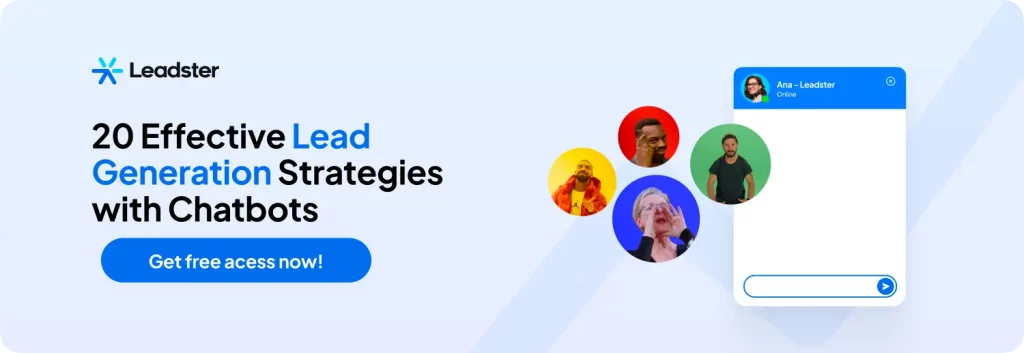
Qualification Questions
In addition to the best article for the chatbot flow, you also need to think about the information you want to have from your visitors.
For this, you’ll need to define what your qualifiers are — that is, what ensures that a lead generated is interesting for your company in a commercial context.
Some examples:
- Geographic location;
- Available budget;
- Number of people working in the company;
- Revenue;
- What type of content interests you;
- Decision-making power (in the case of B2B, it’s the classic “who decides on the purchase in your company?”).
Among other more specific questions. The B2B segment is one of the most complicated to work with, so it will need a lot of planning on each page to ensure good qualification.
In addition to the right questions for your chatbot flows, you’ll also need to find the best time to ask them. Always take into consideration what we addressed in the section above, about segmentation.
With each new offer, you have another opportunity to take your lead further in the Marketing Funnel, so always ask for all the necessary information.
Integration with Automation Tools
This is a very important point for your marketing strategy in general. Your lead generation chatbot simply needs integrations with the other tools you use.
This assists your process by putting your lead in instant contact with any other resource you use. For example: you can generate it through the chatbot and immediately they will start receiving your nurturing emails.
Nurturing Flows
I’ve mentioned a little bit about nurturing flows so far, but it’s worth delving a little deeper into this point because it’s very useful in your marketing strategy.
A nurturing flow is what you’ll do with leads that are not yet ready for purchase — those in the Top of the Funnel and Middle of the Funnel.
Your chatbot flow can work on some nurturing points, such as identifying other materials your lead has already accessed on your site.
But to create a robust nurturing flow, you’ll need a marketing automation tool like RD Station or ActiveCampaign.
Through them, you start sending personalized emails to your lead as soon as they convert on your chatbot.
That’s why integrations are so important. With them, you don’t waste time and you don’t have any manual work exporting leads from the chatbot to the marketing automation tool.
Lead Distribution
When creating your chatbot flows, it’s also important to know that you can send them to your sales team automatically as they arrive.
This setup is one of the most important for Bottom of the Funnel leads. Through it, you can create an attendance roulette, where leads are passed to the sales team one by one.
And through integration with WhatsApp, the transition from the chatbot to direct support on the app is as simple as possible.
In fact, it’s possible to go even further than that. Check it out:
5 Real Chatbot Flow Examples
The best way to understand how to create chatbot flows is by seeing firsthand how they really work.
For this purpose, I’ve gathered here some flows that are currently active here at Leadster. I’ll show you step by step what the calls to action are, the offers, and a bit more about the strategy behind each one.
Of course, your chatbot flow will be a bit different. You have your own motivations and strategies to create them, so use ours more as a reference and a model for consultation, alright?
For Lead Magnet Conversions
In this case, the chatbot flow we’re going to analyze is the one currently running on this page that provides our rich content about OKRs and KPIs.
The first step is the greeting:

To create your chatbot flow, you’ll need to create blocks in the tool and determine what they are (if it’s a question, message, etc.) and what you want to convey with them.
In this case, we created two messages and a response for them, described there as “Start”. When the person clicks “I want to receive,” the flow actually begins:
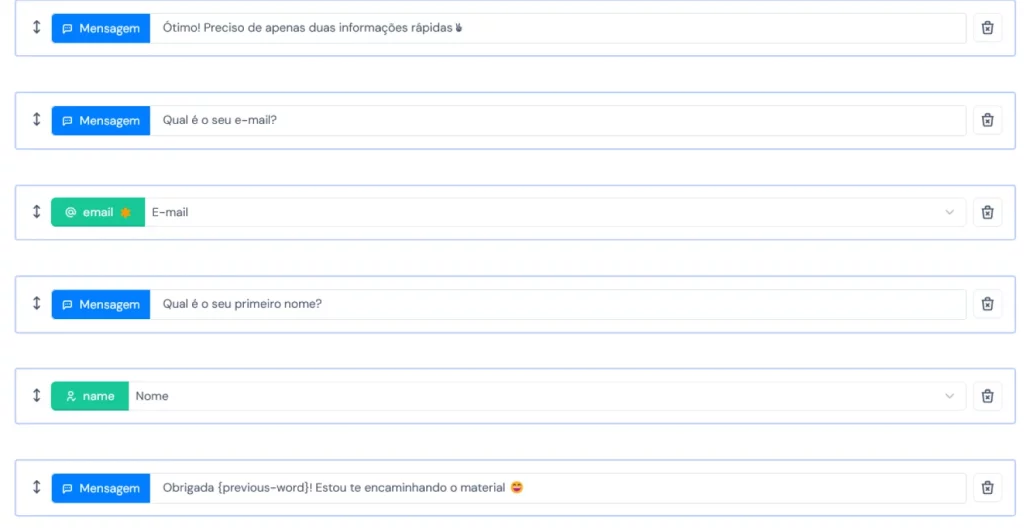
Here, we’re asking for very simple information, just the person’s name and email. This is also easily configured through blocks.
To conclude, we provide one last tip, thank the user, and proceed with delivering the material:
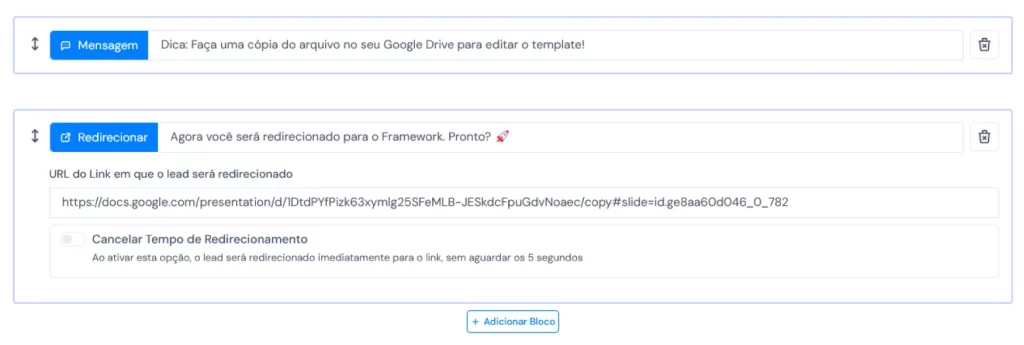
See how it’s even possible to configure the URL of the material directly in the chatbot, without the need to send it via email.
Let’s move on to another example:
Flows with Artificial Intelligence
You can also use the feature of creating flows with artificial intelligence in Leadster.
The work is quite simple. First, you need to have Leadster installed on your site for at least 7 days so that we can analyze your most read pages.
Then, you just need to go to the “Create flows with ChatGPT” category and this big list will appear:
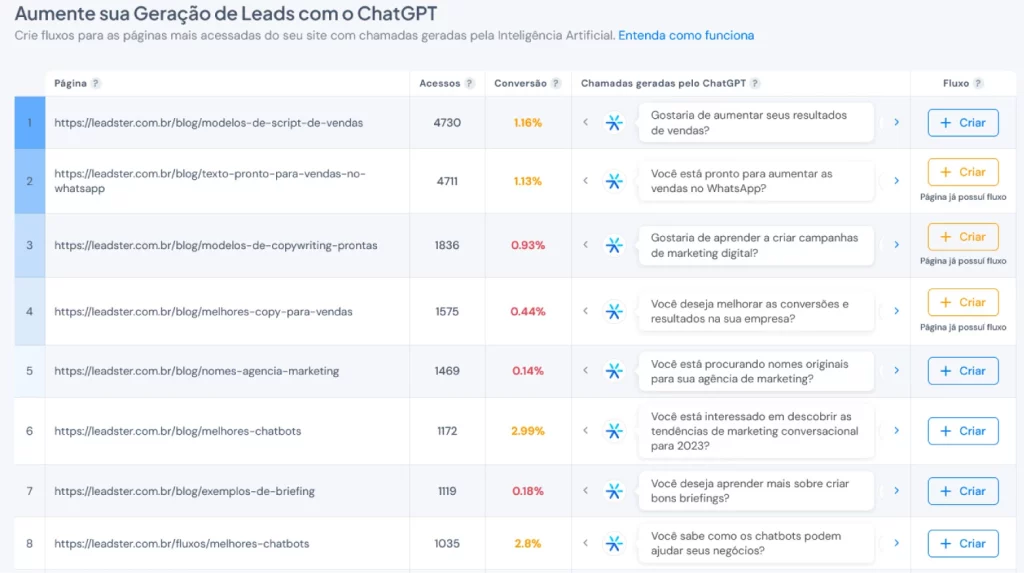
This list indicates your pages with the highest numbers of views, as well as the conversion rate on each of them.
You can create the chatbot flow by clicking next to it, on “Create,” and use the messages generated by ChatGPT.
This way, you streamline the process of comparing your results in Google Analytics and then thinking of 10 unique calls to action. Everything is ready in no time!
For Blog Articles
I brought up the issue of blog posts here because they have a particularity.
Most of your flows will be individual, for specific pages and also talking about something specific about these pages.
In the case of blogs, it’s a bit different. You can group several similar copy into a single chatbot flow.
In fact, it’s even better that you do this because robust content marketing strategies will easily surpass 100 articles published per year. Creating a flow for each one is quite complicated.
See how ours are grouped in one of our most general categories:

And then the flow continues like the others: asking for name and email initially. But in this case, as we’re dealing with the blog, it has a slight variation: we offer a product test at the end and indicate that the lead is now subscribed to our newsletter.
See:
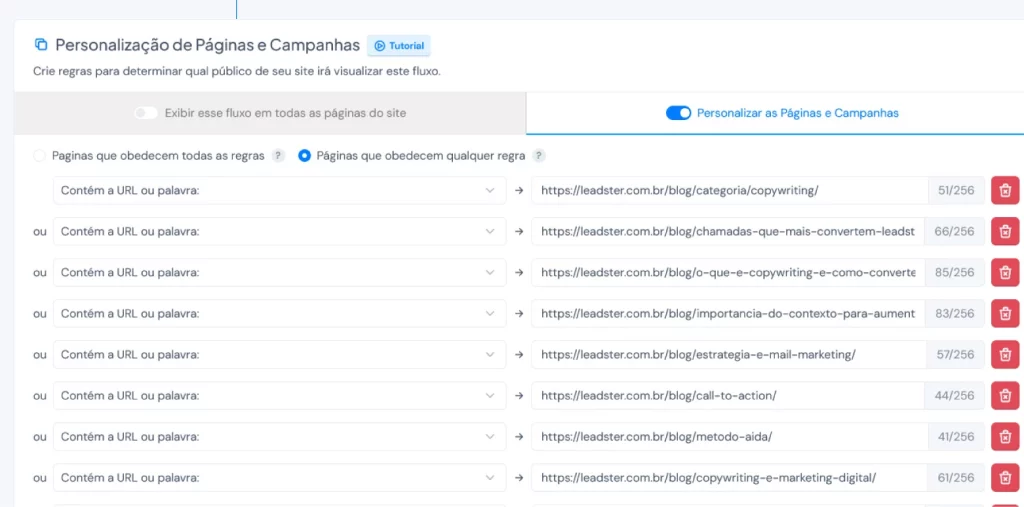
Well, we’ve reached the end of our chatbot flows! I hope I’ve conveyed to you well the ease of creating them and the level of complexity they can achieve to meet your demands.
But you can see all of this in practice today without even needing to register a credit card.
Just click on the link and take a free Leadster test now, no commitment.
Thank you for reading, and we’ll see you in the next article 😉
